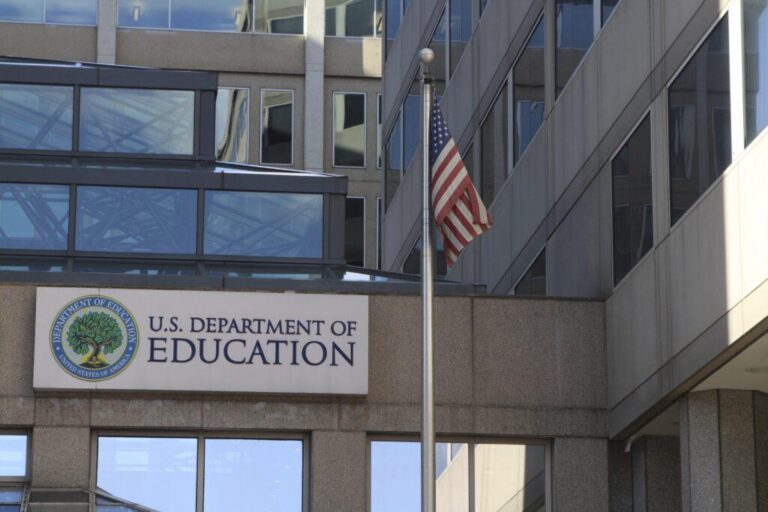The U.S. Department of Education plays a pivotal role in shaping the nation’s educational landscape, influencing policies and programs that impact millions of students and educators across the country. As a federal agency, it works to promote student achievement and ensure equal access to education by overseeing funding, enforcing federal laws, and supporting initiatives aimed at improving educational outcomes. In this article, USAFacts takes an in-depth look at the functions, responsibilities, and impact of the Department of Education, shedding light on how it contributes to the broader goals of the American education system.
Overview of the Department of Education’s Role in Shaping National Education Policy
The Department of Education stands at the forefront of crafting and implementing policies that impact the educational landscape across the United States. It works in close collaboration with state and local education authorities to ensure federal guidelines translate into substantive improvements in classrooms nationwide. Through its rigorous collection of data and analysis, the department shapes policies that address issues such as equity, access to quality education, and innovation in teaching methods.
Key responsibilities include:
- Distributing federal funding to support public schools and special education programs
- Developing standards for academic achievement and accountability measures
- Promoting educational research to inform best practices and policy decisions
- Ensuring civil rights protections are upheld in all educational institutions
| Policy Area | Primary Focus | Impact in 2023 |
|---|---|---|
| Early Childhood Education | Access & Quality | Expanded preschool programs for 250,000 children |
| Special Education | Inclusion & Support | Increased funding by 12% to improve services |
| Higher Education | Affordability & Access | Launched initiatives reducing student debt burden |
Examining Key Programs and Initiatives Driving Student Success
The Department of Education spearheads numerous programs aimed at elevating student achievement and ensuring equitable access to quality education. Among the standout initiatives is the Title I Program, which allocates federal funding to schools with high percentages of children from low-income families, directly impacting resources available for literacy, math, and science instruction. Complementing this effort are targeted scholarship programs such as Pell Grants, designed to alleviate financial barriers for college-bound students, thus broadening higher education access nationwide.
The department also emphasizes innovation and improved educational outcomes through initiatives like the Race to the Top and Student Support and Academic Enrichment Grants. These efforts focus on fostering evidence-based teaching strategies and holistic student development. Below is a snapshot of key programs with their primary objectives:
| Program | Purpose |
|---|---|
| Title I | Support schools in high-poverty areas |
| Pell Grants | Financial aid for low-income college students |
| Race to the Top | Encourage innovative teaching and leadership reforms |
| Student Enrichment Grants | Expand academic support and extracurricular programs |
How Funding Decisions Impact Schools and Communities Across the Country
Funding decisions made by the Department of Education have a profound ripple effect on public schools and the broader communities they serve. When allocated efficiently, these funds help close critical gaps in resources, ensuring that schools in underprivileged areas receive support for infrastructure, technology, and specialized programs. This equitable distribution not only enhances educational outcomes but also promotes social mobility and economic development, reinforcing the role of education as a foundation for stronger, more resilient communities.
The impacts of these financial choices are often visible in tangible and intangible ways:
- Improved classroom environments with access to modern learning tools
- Expanded extracurricular and support services for marginalized students
- Job creation through school construction and program development
- Increased parent and community involvement in school governance
| Funding Use | Community Benefit |
|---|---|
| STEM Program Grants | Boosts local tech industry readiness |
| School Meal Subsidies | Improves child health and concentration |
| Teacher Training Funds | Raises education quality and retention |
| After-School Initiatives | Reduces youth crime and enhances safety |
Recommendations for Strengthening Accountability and Resource Allocation
To improve educational outcomes nationwide, it is essential to implement robust frameworks that ensure transparency and optimize how funds are assigned. Emphasizing clear performance metrics for schools and districts allows policymakers to hold systems accountable while directing resources where they are most impactful. Strategic oversight coupled with data-driven decision-making can transform how federal and state allocations support student achievement, especially in underserved communities.
Key actions include:
- Regular, public reporting on spending and outcomes at local, state, and federal levels
- Aligning budgets with evidence-based programs that target achievement gaps
- Empowering independent audit and evaluation to prevent misuse and inefficiencies
- Engaging community stakeholders to ensure resource distribution reflects real needs
| Recommendation | Expected Impact |
|---|---|
| Enhanced Data Transparency | Improved public trust and targeted interventions |
| Outcome-Based Funding | Higher student success and reduced disparities |
| Independent Audits | Accountability and prevention of corruption |
| Community Involvement | More equitable resource allocation |
In Conclusion
In summary, the Department of Education plays a pivotal role in shaping the educational landscape of the United States by setting policies, distributing federal funding, and ensuring equal access to quality education for all students. As the nation continues to confront challenges such as educational equity, student loan management, and evolving workforce demands, the department’s actions remain central to the broader goal of fostering academic achievement and opportunity. Understanding its functions helps illuminate how federal initiatives impact schools, educators, and learners across the country.




